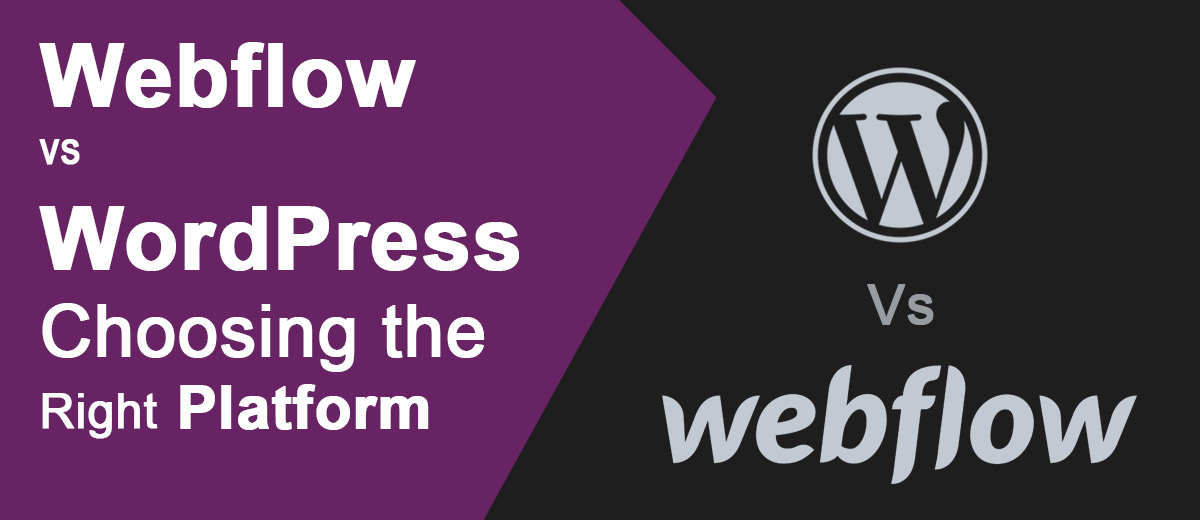When it comes to building a website, selecting the right platform is a crucial decision that shapes the foundation and functionality of your online presence. Webflow and WordPress are two popular options, each offering unique features and approaches to web design and development. In this article, we’ll compare Webflow and WordPress, examining their key characteristics to help you make an informed choice based on your specific needs.
Webflow: The Visual Design Powerhouse
1. Visual Design and Flexibility:
- Pros: Webflow is renowned for its visual design capabilities. With a robust drag-and-drop interface, users can create visually stunning websites without writing code.
- Cons: While visually intuitive, the learning curve can be steep for beginners. Advanced customization might require a deeper understanding of the platform.
2. Built-In Hosting and Maintenance:
- Pros: Webflow includes hosting as part of its package, streamlining the process for users. It also handles maintenance tasks, reducing the need for manual updates.
- Cons: The hosting is Webflow-specific, limiting flexibility if you ever decide to migrate your site to a different platform.
3. E-Commerce Functionality:
- Pros: Webflow offers robust e-commerce capabilities, allowing users to build and customize online stores seamlessly.
- Cons: The pricing for e-commerce features might be on the higher side compared to other dedicated e-commerce platforms.
4. CMS Capabilities:
- Pros: Webflow’s CMS features enable users to manage and organize content efficiently. It’s particularly useful for projects with dynamic content needs.
- Cons: While powerful, the CMS might be more complex than what a simpler website requires.
WordPress: The Versatile Content Management Giant
1. Ease of Use and Extensibility:
- Pros: WordPress is renowned for its user-friendly interface. It’s easy to set up, and the vast plugin ecosystem allows users to extend functionality effortlessly.
- Cons: Customizing the appearance might require a bit more effort, especially for those not familiar with web development.
2. Open Source Community:
- Pros: WordPress benefits from a massive open-source community. This means a wealth of plugins, themes, and constant updates for security and features.
- Cons: The abundance of options can be overwhelming, and not all plugins are created equal, leading to potential compatibility issues.
3. SEO-Friendly:
- Pros: WordPress is inherently SEO-friendly, with features like customizable permalinks, meta tags, and plugins like Yoast SEO to optimize content.
- Cons: Out-of-the-box SEO might not be as comprehensive as some specialized platforms.
4. Versatility and Customization:
- Pros: WordPress is incredibly versatile, catering to simple blogs, complex business websites, and even e-commerce stores. Its customization options are vast.
- Cons: Advanced customization might involve delving into code, making it less suitable for those who prefer entirely visual design.
Choosing the Right Platform for You
When to Choose Webflow:
- You prioritize a visually intuitive design process.
- Your website requires advanced animations and interactions.
- E-commerce or CMS features are integral, and you appreciate a unified design and hosting solution.
When to Choose WordPress:
- You value versatility and want the ability to scale your website as it grows.
- A vast selection of plugins and themes is essential for your project.
- SEO optimization is a top priority, and you want a platform that inherently supports it.
Conclusion
Ultimately, the choice between Webflow and WordPress depends on your specific requirements, technical comfort level, and the vision you have for your website. Webflow excels in visual design and offers an integrated hosting solution, while WordPress, with its open-source nature and extensive community, provides unparalleled versatility and scalability. Carefully evaluate your needs and priorities to determine which platform aligns best with your goals and workflow.
How useful was this post?
Average rating 5 / 5. Vote count: 1
No votes so far! Be the first to rate this post.


